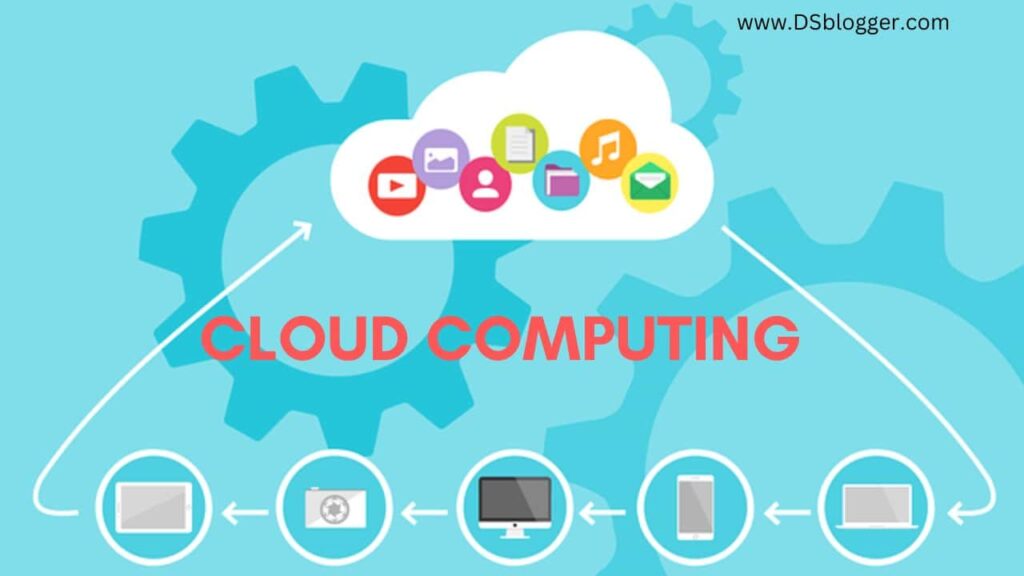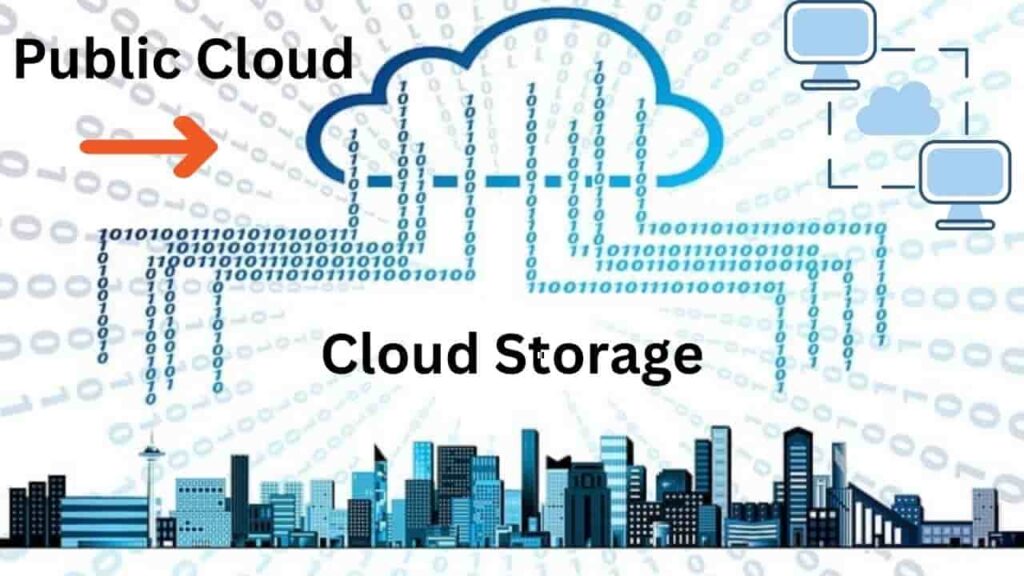Hello everyone! Welcome again to DSblogger.
Today, we’ll unravel the mysteries surrounding Cloud computing. And talk about this innovative technology and explore its various facts.
Cloud computing, in simple terms, refers to the delivery of computing services over the Internet.
Rather than relying on local servers or personal computers, cloud computing harnesses the power of remote servers and infrastructure provided by reputable cloud service providers.

What is Cloud Computing?
Cloud computing refers to the delivery of computing services over the Internet.
Instead of hosting software or storing data on your personal computer or local servers, you can utilize remote servers and infrastructure provided by a cloud service provider.
Cloud Service Models
cloud service model is one type of cloud computing service that is provided by a cloud service provider.
It defines the level of abstraction and the specific set of services offered to users.
The three main cloud service models are
1)Infrastructure as a Service (IaaS): Provides virtualized computing resources like virtual machines, storage, and networks. Users can rent these resources on-demand and pay only for what they use. Users have full control and flexibility over their infrastructure, but they also have to manage and maintain it.
E.g.Amazon Web Services (AWS), Microsoft Azure, Google Cloud, DigitalOcean, and Linode.
2)Platform as a Service (PaaS): Offers a platform for developing, running, and managing applications without worrying about the underlying infrastructure.
E.g.Heroku and Microsoft Azure App Service.
3)Software as a Service (SaaS): Delivers software applications over the internet, accessible through web browsers. Users can use these applications for various purposes, such as email, collaboration, CRM, ERP, etc.
E.g.Google Workspace, Salesforce, and Dropbox.
4)Serverless computing: Serverless computing is a type of cloud service that allows users to run code without provisioning or managing servers.
Users can write and deploy functions that are triggered by events or requests.
The cloud provider automatically scales and manages the execution of the functions.
Users pay only for the compute time consumed by the functions
Benefits of Cloud Computing
Scalability
Cloud services allow you to easily scale your resources up or down based on your needs.
For example, during peak traffic times you can increase server capacity and reduce it during low traffic periods.
Cost Efficiency
Instead of investing in expensive hardware and infrastructure upfront, cloud computing enables you to pay for resources on a pay-as-you-go basis.
This reduces the initial cost and provides flexibility.
Accessibility
With the help of cloud computing, you can access your files and data from anywhere, anytime in the world by internet connection and capable devices like laptops, tablets, or smartphones.
Reliability and Maintenance
Cloud service providers handle infrastructure maintenance, ensuring high reliability and availability of services.
Deployment Models
Public Cloud
public cloud is services that are provided over the internet by third-party providers and available to the general public.
Examples include AWS, Azure, and Google Cloud.

Private Cloud
A private cloud is a cloud service that is exclusively used by a single organization or entity. Infrastructure and services are dedicated to a single organization and are not shared with others.
Private Cloud dedicated to a single-user organization.
Hybrid Cloud
Combines public and private cloud environments, allowing data and applications to be shared between them. Users can leverage the best of both worlds by moving workloads and data between the different clouds depending on their performance, security, and cost requirements.
Security and Data Protection
Cloud service providers implement robust security measures to protect data.
They often have dedicated teams focused on security, encryption, access control, and monitoring.
However, it’s essential to understand the shared responsibility model where the provider secures the infrastructure, while customers are responsible for securing their applications and data.
Disaster Recovery and Business Continuity
Cloud computing offers built-in disaster recovery and business continuity capabilities.
Data is typically stored across multiple data centers in different locations, ensuring redundancy.
In case of a hardware failure or natural disaster, your data and applications remain accessible, minimizing downtime.
Virtual Desktop Infrastructure (VDI)
Cloud computing enables the creation of virtual desktop environments hosted in the cloud.
This allows users to access their desktops and applications remotely from any device, improving mobility and flexibility.
Examples include Amazon WorkSpaces, Azure Virtual Desktop, and VMware Horizon Cloud.
FAQS
What is cloud computing?
Cloud computing involves delivering computing services over the internet instead of relying on personal computers or local servers.
It utilizes remote servers and infrastructure provided by cloud service providers.
What are the main cloud service models?
The main cloud service models are Infrastructure as a Service (IaaS), Platform as a Service (PaaS), and Software as a Service (SaaS).
What are the benefits of cloud computing?
The benefits include scalability, cost efficiency, accessibility, and reliability.
What are the deployment models in cloud computing?
The deployment models are public cloud, private cloud, and hybrid cloud.
How is security and data protection handled in cloud computing?
Cloud service providers implement robust security measures, but customers also have a shared responsibility for securing their applications and data.
What is the role of cloud computing in disaster recovery and business continuity?
Cloud computing offers built-in disaster recovery and business continuity capabilities by storing data across multiple data centers.
What is Virtual Desktop Infrastructure (VDI) in cloud computing?
VDI enables users to access their desktops and applications remotely from any device.










